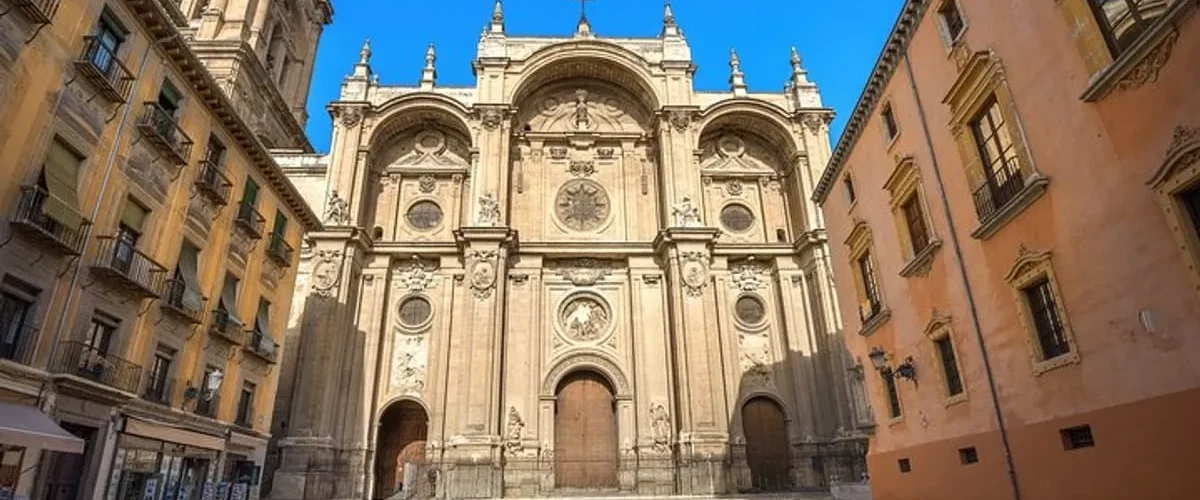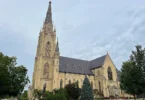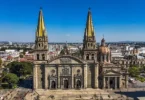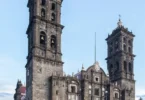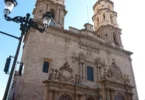Introduction
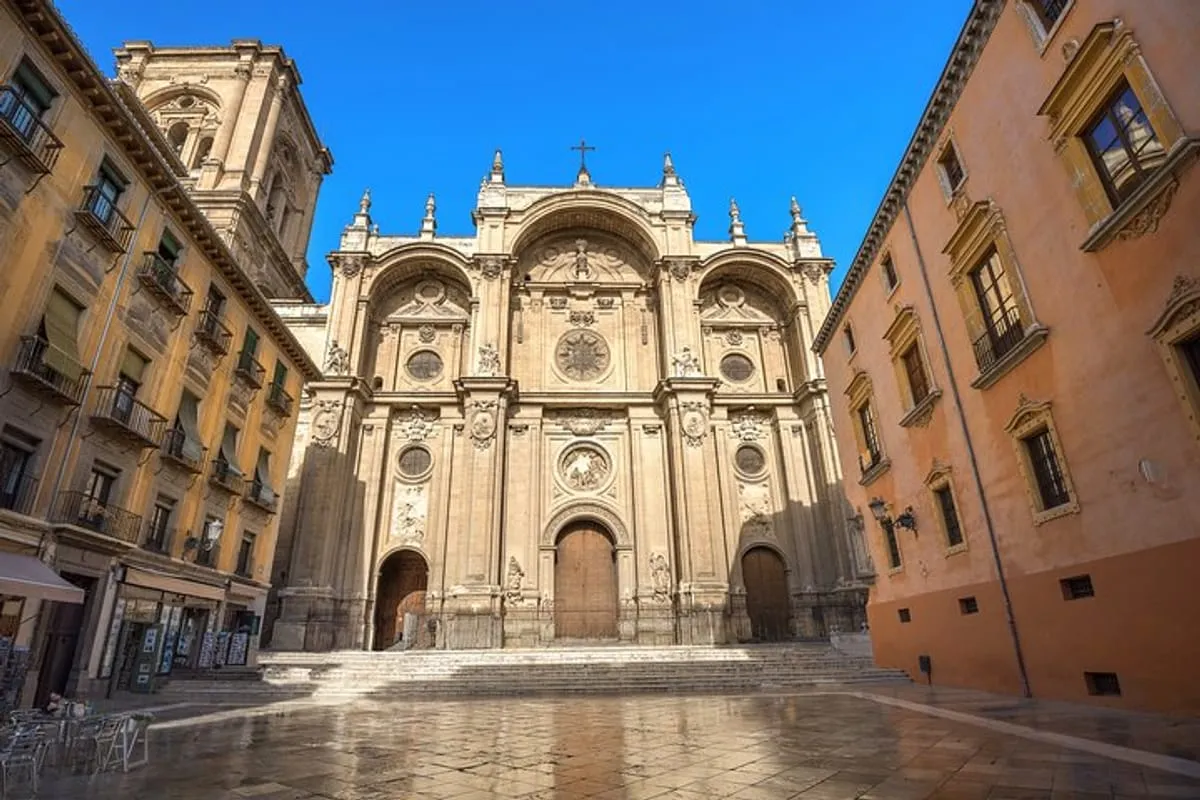
The Metropolitan Cathedral-Basilica of the Incarnation (Spanish: Basílica Catedral Metropolitana de la Encarnación), is a Roman Catholic cathedral in the city of Granada, Spain. The cathedral is the seat of the Archdiocese of Granada. Like many other cathedrals in Andalusia, it was built on top of the city’s main mosque after the reconquest of Granada.
From street level it’s difficult to appreciate the immensity of Granada’s cavernous, boxed-in cathedral. But it’s nonetheless a monumental work of architecture, and one of Spain’s largest cathedrals. Built atop Granada’s former mosque, it was originally intended to be Gothic, but over the two centuries of its construction (1523–1704) it underwent major modifications. Most notably, architect Diego de Siloé changed its layout to a Renaissance style, and Alonso Cano added a magnificent 17th-century baroque facade.
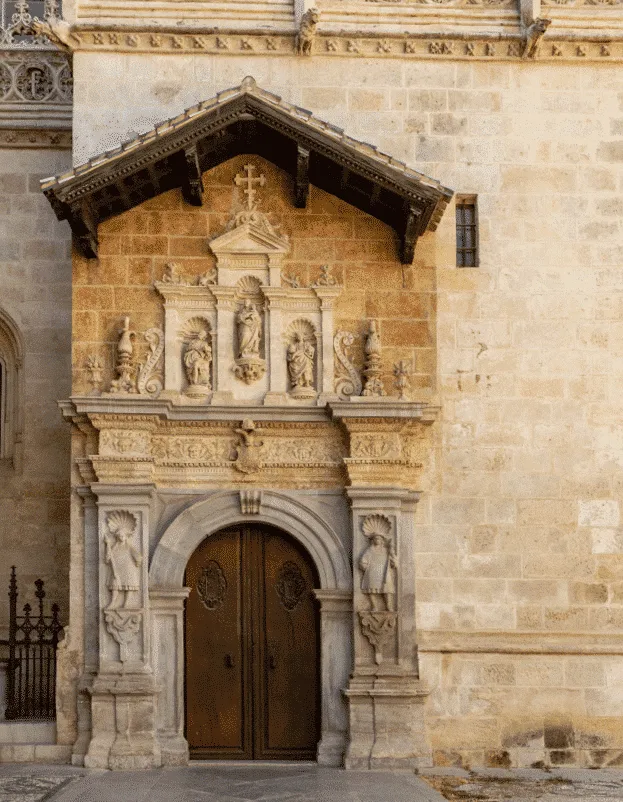
The Cathedral of Granada is dedicated to Santa María de la Encarnación. Unlike most cathedrals in Spain, construction was not begun until the sixteenth century in 1518 in the centre of the old Muslim Medina, after acquisition of the Nasrid kingdom of Granada from its Muslim rulers in 1492. While its earliest plans had Gothic designs, such as are evident in the Royal Chapel of Granada by Enrique Egas, most of the church’s construction occurred when the Spanish Renaissance style was supplanting the Gothic in Spanish architecture. Foundations for the church were laid by the Enrique Egas starting from 1518 to 1523 atop the site of the city’s main mosque.
By 1529, Egas was replaced by Diego de Siloé who worked for nearly four decades on the structure from ground to cornice, planning the triforium and five naves instead of the usual three. Siloé combined a Renaissance dome with a Gothic floor plan, joining the circular and basilica ground plans. Most unusually, he created a circular capilla mayor (principal chapel) rather than a semicircular apse, perhaps inspired by Italian ideas for circular ‘perfect buildings’ (e.g., in Alberti’s works). Within its structure the cathedral combines other of the Vitruvian orders of architecture.
Subsequent architects included Juan de Maena (1563–1571), followed by Juan de Orea (1571–1590), and Ambrosio de Vico (1590–?). In 1667 Alonso Cano, working with Gaspar de la Peña, altered the initial plan for the main façade, introducing Baroque elements. The cathedral took 181 years to build. It would have been even grander had the two 81-meter towers included in the plans been built; however, the project remained incomplete for various reasons, among them financial.
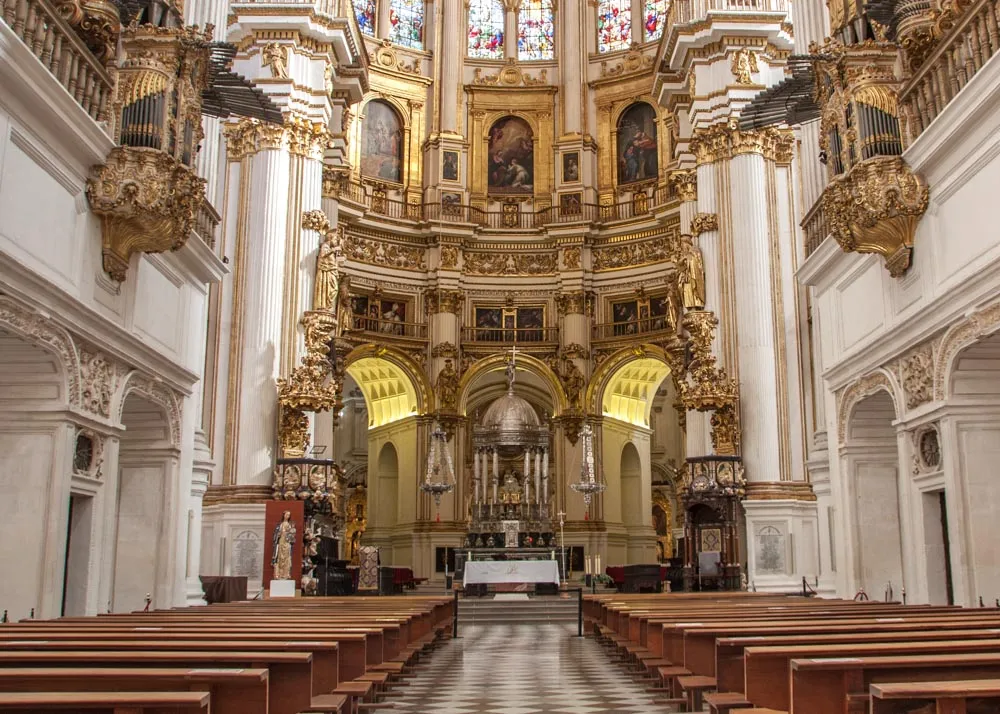
The facade consists of a framed structure in the form of a triumphal arch with portals and canvas. It consists of three pillars crowned by semicircular arches supported on pilasters, similar to San Andrés de Mantua of Leon Battista Alberti. The pilasters do not have capitals but projections sculptured in the walls, as well as attached marble medallions. Above the main door is located a marble tondo from “José Laughing on the Annunciation”. Additionally, there is a vase with lilies at the top, alluding to the virgin and pure nature of the mother of God.
Granada’s cathedral has a rectangular base due to its five naves that completely cover the cross. All of the five naves are staggered in height, the central one being the largest. At the foot of the cathedral there are two towers. The left one, called the tower of San Miguel, acts as a buttress which replaced the planned tower on that side. The dome is populated with gold stars on a blue field. The central oculus of this vault is surrounded by petal shapes.
The main chapel consists of a series of Corinthian columns on which capitals is the entablature and, over it, the vault, which houses a series of delicate stained glass windows. The main chapel contains two kneeling effigies of the Catholic King and Queen, Isabel and Ferdinand by Pedro de Mena y Medrano. The busts of Adam and Eve were made by Alonso Cano. The Chapel of the Trinity has a marvelous retablo with paintings by El Greco, Jusepe de Ribera and Alonso Cano. The sacrarium, raised between 1706 and 1759, follows the classic proportions of the whole, keeping the multiple columns of the transept the shapes of the compound of Siloam.
Dedication to The Incarnation of The Son of God
Granada Cathedral is dedicated to Saint Mary of the Incarnation instead of the more common name of Saint Mary of the Annunciation. During the Renaissance, the belief in the Incarnation, the first act of the Redemption, was a fundamental dogma of the Christian faith; Siloe adopted it as the central theme of its programme conceived in 1528. The twenty-four stained glass windows of the main chapel narrate the story of the Redemption: the ten upper ones, arranged in chronological order, begin with the preaching of the Baptist and end with the coming of the Holy Spirit; the lower windows show passages from the life of Christ. Among the sculptures in the main chapel, the twelve apostles stand out.
The apostles, in fact, are the first witnesses of Christ and their position on the columns of the first body evokes the traditional allusion as pillars of the Church. The busts of Adam and Eve also stand out, referring us to the beginnings of our sacred history. The historical fact of the Incarnation of God – the great theme that generates the architectural and iconographic program – happens in Mary: “And so she was with her crucified son, crucified; and also with his buried one, buried; and also with his resurrected one, resurrected” (Fray Luis de Granada) . For this reason, the series of seven paintings by Alonso Cano on the life of the Virgin – the joys of Saint Mary – in the second body of the rotunda.
The Declaration of Triumph
An obvious statement of triumph lights up the cathedral temple: spiritual triumph in the foreground, military in the background. The frequent use of triumphal arches (the three main entrances, the side chapels) clearly manifests the expression of triumph that we also find in the passageways and in the transverse aisles of the ambulatory around the rotunda and the main altar; In this way, the idea of triumph enhanced the Holy Sacrament of the altar. Although the conquest of Granada undoubtedly explains the theme of triumph within the Cathedral programme, it is the Victory of Christ, God Incarnate, which is commemorated by means of reminders and pictorial and sculptural representations. The conquest of Granada was interpreted as a triumph of Christ and his Church and not of military forces. (EE Rosenthal). This interpretation of triumph is also underlined in the Latin inscriptions on two of the bells: on the bell of the Catholic Monarchs This is the victory that conquers the world: our faith. and on the fire bell (the Gothic one): “Behold the cross of the Lord: the lion of the tribe of Judah, the root of David, has conquered, hallelujah.”
The Expression of Joy
In the cathedral there are express references to the sacrifice of Jesus Christ. But, in addition, upon entering its grounds, we are surprised by its atmosphere of joy: the brilliant luminosity of its naves, the light radiating in the main chapel and diffused over the gold and white of the rotunda. The whiteness, the golden touches, the beautiful stained glass windows translate into beauty and splendor the optimistic feeling of grace, present both in the Reformation and the Counter-Reformation, an optimistic feeling in full harmony with the nascent Renaissance humanism. Triumph, forgiveness, and joy, consequences of the saving fact of the Incarnation, are captured in this Renaissance temple: triumph over all evil, universal forgiveness, Easter joy celebrated, day by day, in the Eucharistic liturgy, memorial of the death and resurrection of Jesus Christ.
Feast Day
Feast Day : 25th March
The Feast of the Annunciation, which is celebrated on March 25 every year, goes by many names.
Church Mass Timing
Monday To Saturday : 8.45 AM
Sunday : 11:00 AM and 12:30 PM
Church Opening Time:
Monday : 10.00 AM – 6.00 PM
Tuesday : 10.00 AM – 6.00 PM
Wednesday : 10.00 AM – 6.00 PM
Thursday : 10.00 AM – 6.00 PM
Friday : 10.00 AM – 6.00 PM
Saturday : 10.00 AM – 6.00 PM
Sunday : 03.00 PM – 6:30 PM
Contact Info
Address :
Pl. de las Pasiegas, s/n, Centro, 18001 Granada, Spain
Phone : +34 958 22 29 59
Accommodations
Connectivities
Airway
Federico García Lorca Granada Airport (GRX) to Granada Cathedral spain Distance 25 min (18.4 km) via Autovía de Santa Fe a Granada/A-92G.
Railway
Granada railway station to Granada Cathedral spain Distance 8 min (1.8 km) via C. San Jerónimo.

